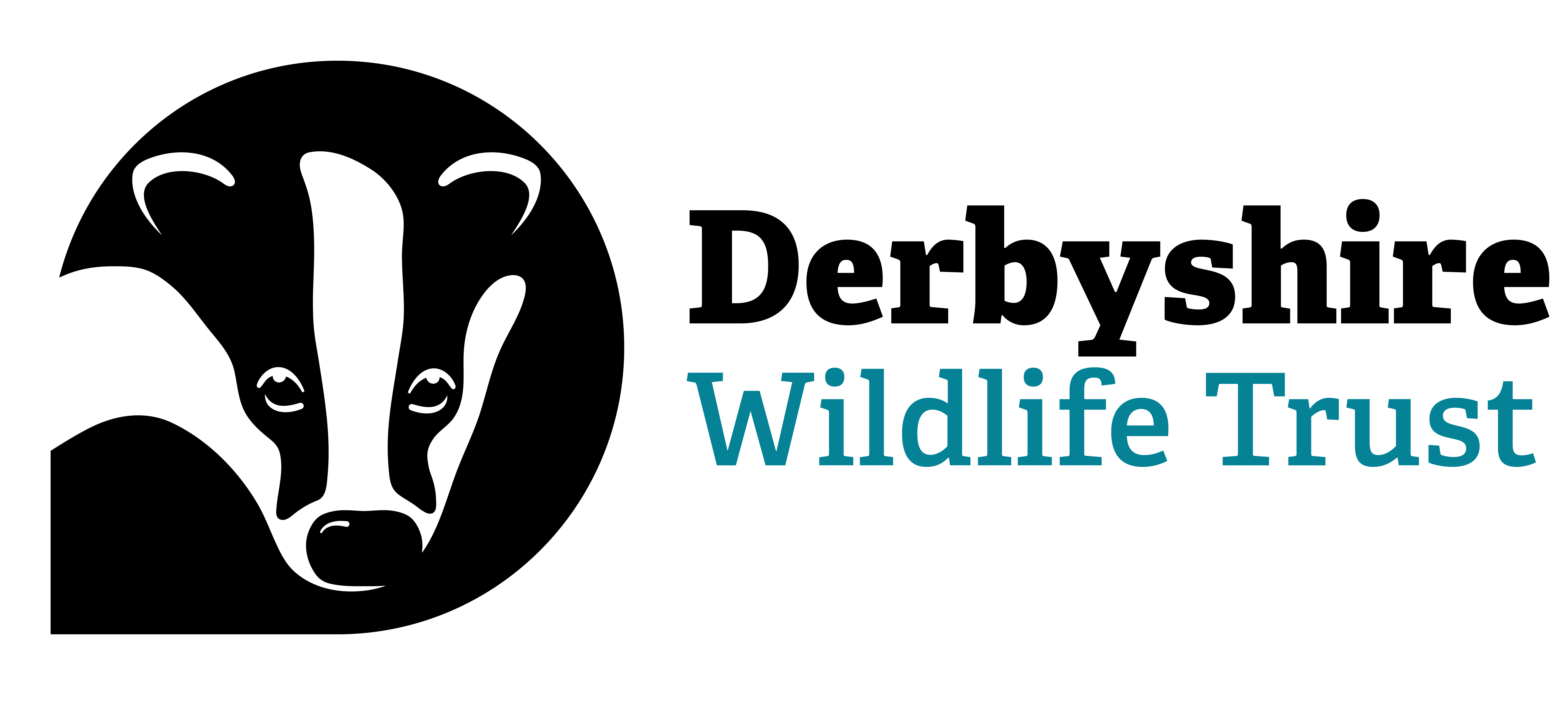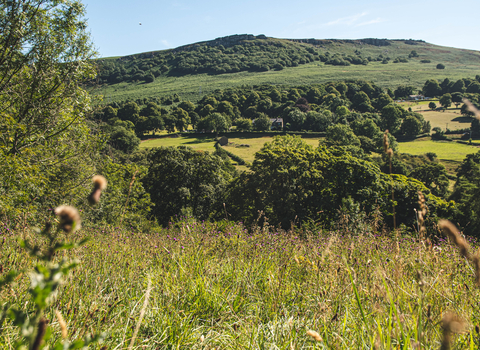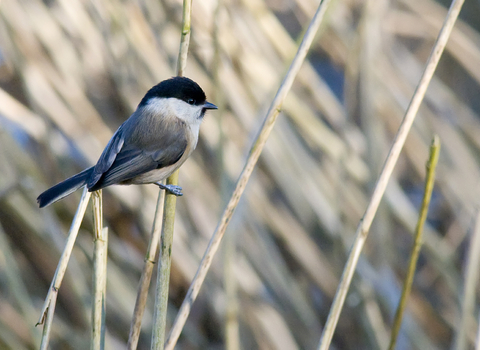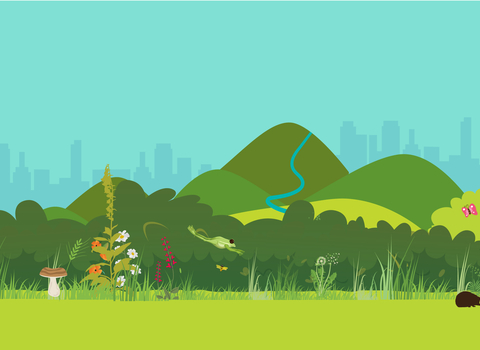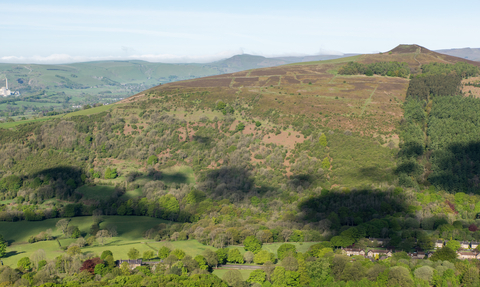
(C) Rewilding Britain/ Sam Rose - whatifyoujustleaveit.info
What is Rewilding?
Rewilding is the restoration of natural processes
Natural processes are the interactions and movements that happen and have happened every day across the planet for millennia, shaping ecosystems, habitats, flora and fauna in their wake. Some natural processes are huge, resulting in instantaneous impacts such as an earthquake whereas others are subtler, constantly happening around you, such as invertebrates pollinating plants or jays naturally expanding woodlands by burying acorns, slowly altering habitats.
As the level of human intervention in our ecosystems has increased, the ability for many of these natural processes to function has been impeded or prevented entirely. In order to allow nature to recover, we need to reinstate these natural processes. Nature-based solutions is a term we use for the wide-ranging collection of land management methods that use natural processes and nature to guide ecosystem recovery.
Reintroducing lost natural processes over time allows our habitats and landscapes to become more resilient - allowing a wider variety of niches, supporting more species, and possibly becoming self-sustaining in the long-term, slowly needing less and less human interventions as more natural management takes precedence.
Nature Based Solutions and Wild Peak
To allow nature to recover in the Peak District we need to kickstart the ecosystem and help guide it into recovery by mimicking these lost processes that have been removed over time. There are many different types and levels of nature-based solutions that can be implemented at any given location. The process you can reintroduce depends on a number of factors, from the nature of the site and the habitats present, to the amount of time, money, resources that can be committed. Below is a list of examples of nature-based solutions to problems we face in the Peak District.
Reintroduce Succession
A long history of intensive human intervention has created a landscape that is stagnant - prevented from moving forwards and evolving to external factors such as climate continue to alter around it. By accepting that succession is the sign of a healthy, functioning ecosystem, we can create a more resilient landscape, step back and allow heavily managed land to move forwards, whether that be to woodland, heathland or scrub.
Natural Woodlands
Many of the woodlands within the Peak District are intensely managed conifer plantations for quick crop wood, as opposed to the native, broadleaf woodland we would expect to find in the region. Plantations have much lower levels of biodiversity with minimal ground flora or understory vegetation, and due to the linear style of planting, plantations are often not as successful at slowing the flow and reducing flood risk as natural woodlands.
Where these plantations are no longer in commercial use, a long-term gradual solution to this is to remove these non-native, uniform plantations and allow natural regeneration to take place, with native, broadleaved trees and scrub. Where this is not yet possible or where semi-natural woodland already exists, a number of smaller scale nature-based solutions exist, including removing boundary fences to allow soft boundaries to form, leaving deadwood where it falls and reintroducing grazers to naturally coppice trees as opposed to doing this by hand.
Restoring Rivers and Floodplains
Many rivers and streams have been straightened, had their banks altered and had weirs installed, resulting in a disconnect between water bodies and their floodplains. Not only has this negatively impacted species using these areas, it has also had significant impacts on water quality and flood risk. Nature based solutions to restore these areas include removal of weirs, re-meandering rivers and restoring riparian woodland corridors.
Peatland Restoration
Peatlands have traditionally been heavily managed to suppress succession, channelise flow and boost population numbers of red grouse for game sports. This has led to burnt, dry expanses dominated by heather with fewer and fewer sections of bog, wetland and woodland or scrub. After this level of management, peatlands struggle to function - no longer able to store water and carbon. By blocking manmade drains, rewetting the moors, stopping burning and reducing grazing pressure on moorlands we can restore this valuable habitat.
Natural Grazing and Mimicking Ghost Species
In an ideal world, we would remove fences to de-compartmentalise the landscape and treat it as a whole, allowing large herds of different grazers, from hardy cattle to wild boar to roam. They would be moved across the large expanses of habitat, driven by the landscape of fear created by the reintroduction of top line predators, creating a mosaic of habitats and sword lengths. However, in the short-term, when this isn’t possible, we can use conservation grazing methods, using a variety of different grazers including cattle, deer, pigs, ponies and sheep, rotating them across different areas of land. We can replicate the natural movements that would be caused by the predators by altering grazing pressure across the years, mimicking the moving herds.
Reintroduce Ghost Species
Many species are missing from the landscape that should be here, including keystone species and ecosystem engineers that drive changes in the environment. Reintroducing lost species can reduce the amount of human intervention in managing , allowing the environment to move into a level of self-sustainment. Key species to consider reintroducing to naturally manage habitats are:
Beaver – nature’s architect! Beavers create amazing, varied habitats that support hundreds of different species from aquatic life to avian populations. They slow the flow of rivers and create mosaics of wetlands.
Pine Marten – these mischievous mustelids are an excellent natural predator for grey squirrel, potentially helping move us into a position where we can restore habitats for our own native red squirrel and bring them back from the brink.
Lynx – creates predator pressure, keeping large grazers and herds on the move, preventing overgrazing and moving this natural management across the landscape.
Wild boar – one of the few species that can tackle bracken, turfing up the soil and roots can help push back bracken dominance to allow more variety to come through. They create small, seasonal wetlands from wallowing in mud baths and disturbing the ground creates open spaces for new seeds to germinate and maximise species diversity.
Wild pony – graze tougher grasses to break up tussocky grasslands and woody vegetation, create species rich swords with a mosaic of characteristics including open spaces from wallowing and wood pasture.
